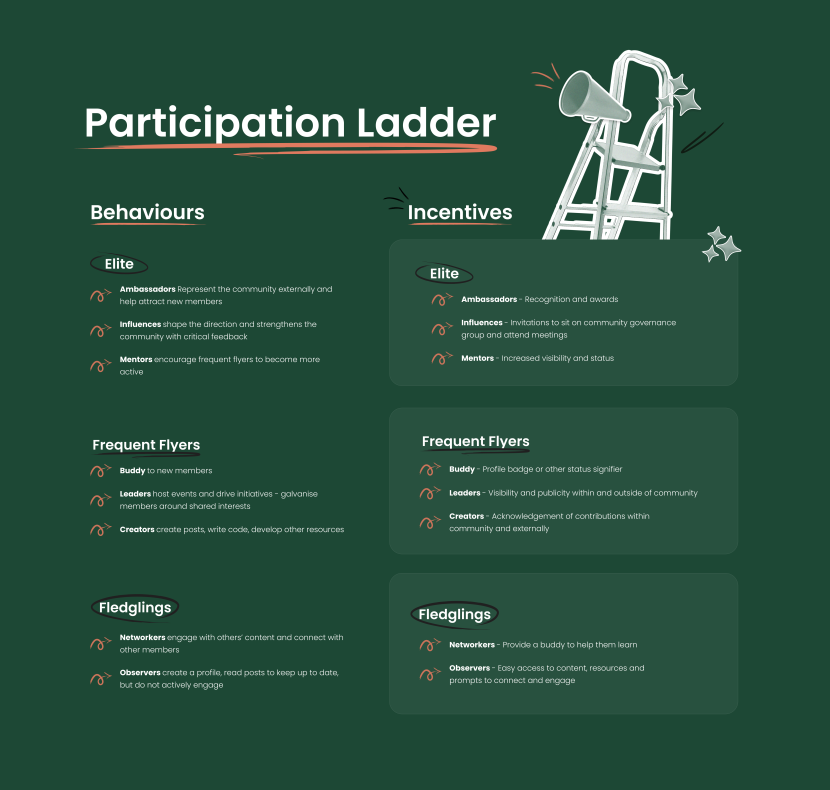The evolution of brand loyalty (How to create a fair value exchange)

We hear a lot about customer loyalty and how important it is to the success of any business. But did you know only 3% of people would stay loyal to their favourite brands if a competitor offered cash or a points incentive to switch?
Brand loyalty is hard to earn and can quickly be taken away if the value exchange is better elsewhere. That’s why building connections with your customers is vital. A digital community creates an ecosystem where passionate customers engage and become involved in a way that turns brand loyalty into customer advocacy.
Let’s dive in.
Understanding brand loyalty
Say someone goes to a high-street store and picks up a new brand of face moisturiser. They get home, use the product daily, and decide they like how it works for their skin type. They continue to buy the moisturiser and don’t plan on changing to another brand.
At this stage, they’ve become ‘brand loyal’. They know what they’re getting each time and are happy to trade their money for what they receive in return.
This level of brand loyalty is great for companies, but it has its limitations.
What happens when a new skincare brand comes along with a 30-day free trial and money-back guarantee? Or when a close friend starts raving about a vegan moisturiser from a company that donates a percentage of profits to charity?
The brand loyalty this person once had will likely come to a halt. The predictable benefit the original company offers (moisturised skin) is no longer a good enough ‘value exchange’ to keep their business.
So, how do companies hold on to loyal customers?

Improving the value exchange with online communities
The purchase of a product or service used to be the end of the customer buying journey, but not anymore. In 2024, the majority of consumers are looking for ongoing engagement and connection with brands.
According to a recent survey, 64% of consumers want brands to connect with them, and nearly half expect brands to bring people together toward a common goal. This means that companies need to think beyond the transactional value and consider the emotional and community-based values they provide.
For example, if the skincare company above had an online community, they could build and nurture the customer relationship by:
Asking them for feedback about the results they’re getting from the moisturiser
Inviting them to an in-person event where they receive a skincare analysis and personalised product recommendations
Adding them to a Facebook group with other skincare enthusiasts
Community traits like these improve the value exchange between the company and the customer. The skincare company increases its chances of retaining a customer while gaining valuable feedback, and the customer feels part of something with the opportunity to voice their opinions to improve the product.
Think about the participation ladder
Community engagement strategies start during onboarding and continue throughout the member lifecycle. One of the best ways community leaders can evaluate their current value exchange is through the participation ladder.
The participation ladder allows you to align levels of member involvement with incentives:

Low involvement
These types of members are your observers and networkers. They are passive members, focused on watching/listening/reading instead of getting actively involved. In exchange for their low involvement, they typically get access to content and a person who welcomes and shows them around (a ‘buddy’).
Medium involvement
The middle ground would be your creators, leaders, and buddies. For a higher level of involvement, the incentives also increase. Creators are acknowledged for their contributions, leaders gain visibility within and outside the community, and buddies tend to achieve some form of status signifier.
High involvement
Your ambassadors, influencers, and mentors are at the top of the participation ladder. These community members are as involved as they can be without being company owners. For their high contributions, they gain increased visibility and status, invitations to community governance groups, and recognition.
Spend time segmenting your community members and ensure the value exchange is relevant and fair to each member's behaviour. Create clear pathways to move up the ladder that highlight the benefits of higher involvement and encourage continuous engagement.

Advocates > acquisition
It’s well known that it's cheaper for businesses to retain customers than acquire new ones, but community leaders can gain so much more than financial benefits when they focus on their active members.
Community improvements
Invite your current members, particularly those at the top of the participation ladder, to advise on improving your community. Getting an insider perspective can be a game-changer for community leaders and ensures you’re providing your most loyal members with precisely what they want.
By giving your community members a slice of control, your top contributors will always feel heard and respected.
Welcome committee
Your high-contributing members can also welcome newcomers in a way that builds trust and like-minded enthusiasm. At the end of the day, people trust people. Your ambassadors will help new members learn about your company values and understand the benefits of community participation.
Being introduced to the community by a long-standing member can be the difference between being a lifetime ‘observer’ and moving up the participation ladder to ambassador status.
How to turn members into community ambassadors
Simply, it comes down to giving your community members a voice and doing something with that voice. When you ask members for feedback and suggestions, it’s how you act on the feedback that will determine how successful your community is and how engaged your members are.
Ambassadors are not there to spectate; they want to participate. They’re at the top of the participation ladder because they want the responsibility.
Remember, a community is a multi-faceted, two-way conversation. By involving your top members in decision-making, you’re more likely to have members who will stay loyal and champion for your community.
Community building for advocacy
In digital communities, nothing is more important than providing your members with value. Listen to what they like and dislike, and make sure you continually supply them with a fair value exchange for their loyalty.
At Steadfast Collective, we help companies build community-focused platforms. If you’re looking to improve your community retention and provide your members with the best possible value, get in touch with the team today.
More Articles

Can you track it?
Every budget is being put under the microscope right now, and quite right too.

When to Build Your Own Membership Platform (and When Not To)
I’ll let you in on a secret, not every membership organisation needs a bespoke membership platform.

Design for AWE
Anchor. Wonder. Connection. The blueprint for unforgettable memberships.

